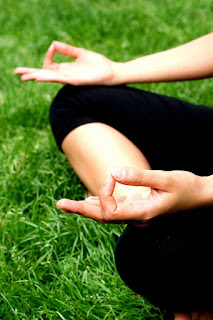Yama - The First Limb of Yoga

Yamas - Our Understanding of the Universal Laws of Nature and Our Relationship with Ourselves and Our Environment.
Patanjali's Yoga Sutras describe the Eight Limbs of Yoga.
It is important to note that these eight limbs are interrelated and can therefore only be experienced together as a whole, rather than as consecutive steps. The first limb of Yoga, Yamas, is about respecting and learning from the laws of nature. We regain our sense of union through postures, pranayama (breathing), and meditation, rather than feeling separate from nature.
The motivation is to decrease dukha, or suffering, to increase sukha, or happiness, and to lead towards sat-chit-ananda, the unitive yogic state of truth, consciousness and bliss. Even if we can only experience a glimpse of this in fleeting moments during meditation we are at the very least improving our well being and potentially feeling connected and inspired in the way that we need it most. When practiced with care, respect, and in the spirit of truth, non grasping and non competitiveness there should be no negative side effects, there should be no injuries, and in fact yoga is used in many therapeutic ways. This is possible because at yoga's heart is the principle of ahimsa, non violence, or in other words, compassion for all life. Being a scientific discipline as well as a way of life, actual practice is essential in yoga for it's philosophy to have relevance. At the same time, the philosophy is always important so that the practice can be done correctly and safely.
It must be understood that the yamas are not a list of rules, rather they are a selection of concepts for contemplation on an individual and personal level. Yoga is a journey that is unique for each person and although it may be necessary to be guided by it's timeless wisdom, it is equally as important to experience it and to figure out our own unique path. The beauty of the yoga texts is that we are even reminded of this, and by advocating this approach yoga combines the spiritual with the scientific.
Rather than being a religion, yoga is a spiritual path that enables us to connect with our inner guide. Students of all faiths practice yoga all over the world, as it is an adaptive, living, breathing science that has been developed with the individual's physical, psychological and spiritual needs, as well as the idea of adaptation in mind. The fundamental idea in the asanas, or yoga postures is to understand how to balance strength with flexibility, effort with relaxation, and firmness with happiness and this means in the body, the mind and the spiritual ideas.
Practiced correctly yoga can enrich our lives, making us stronger, more confident and better able to express ourselves. Yoga places great emphasis on relaxation allowing us to feel restored as well as energized at the same time, and improving our ability to cope with stress or illness. If we are in good health yoga can help us to understand that which is most important to us and how we can bring ourselves closer to it. A good yoga practice is also a natural high, and has the ability to uplift the yogi's mood to feeling joyful and at peace.
- Ahimsa - non violence to all living beings in thought, word and deed
- Satya - truth
- Asteya - non stealing
- Brahmacharya - conservation of vital energy for it's appropriate use
- Aparigraha - non possessiveness


